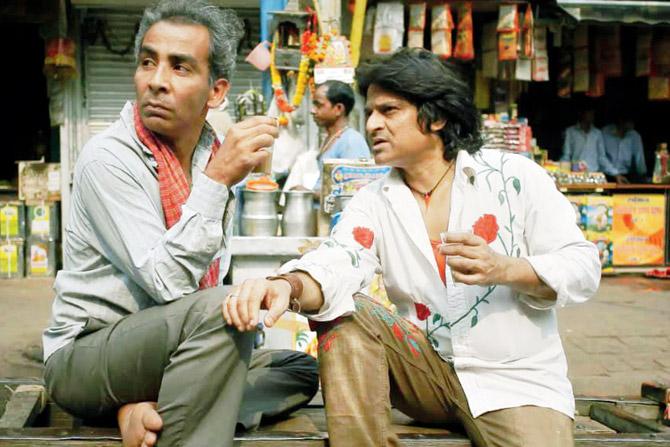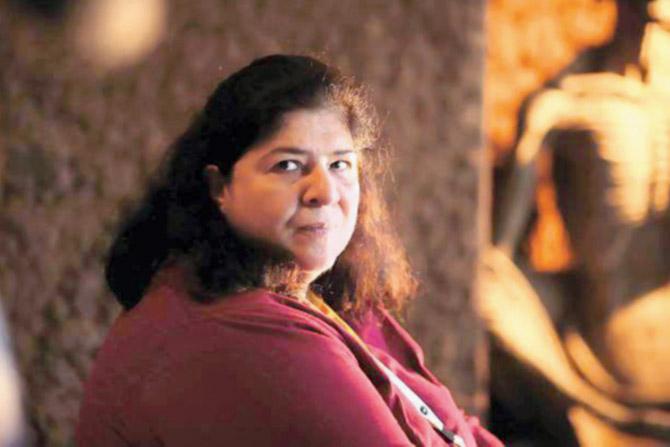Veteran theatre artiste and recipient of the first Karwan-e-Habib Tanvir honour, Anamika Haksar on the influence of the thespian on her art, and turning filmmaker after 40 years on stage

The film juxtaposes documentary footage with animation
Having watched every play of Habib Tanvir that was staged in Delhi from when she was as young as eight, Anamika Haksar's introduction to the "theatre of people" as Tanvir called it, couldn't have come from a better source than the pioneer himself. His plays — many of which were based on indigenous performance forms and included a diverse cast of folk artistes from rural Chhattisgarh and elsewhere, alongside urban actors — were laced with "zameen ki boo," says Haksar.
That earthy fragrance wafts through her own works, whether it is the play, Uchakka, based on the life of people branded as a criminal community since the British Raj, or more recently, her debut film Ghode ko Jalebi Khilane Le Ja Riya Hoon (2018), which depicts Old Delhi through the eyes of its migrant population and daily wage earners.
ADVERTISEMENT
On September 1, which is Tanvir's 96th birth anniversary, Haksar became the first recipient of the Karwan-e-Habib Tanvir honour, instituted in memory of the playwright. "This is very special for me. I have witnessed Habib sahab's quest to explore Indian realism and grapple with defining what it is that is Indian without being ethnic. His questioning of the tradition, making it fluid through language, boli, music and folk art, and the loosening of structure have all come together [to inform my practice]. BV Karanth [the late theatre personality] also left a deep impact on my work," shares the Mumbai-based artiste, who is former diplomat PN Haksar's daughter.

Actors Gopalan and Ravindra Sahu in a still from Ghode ko Jalebi Khilane Le Ja Riya Hoon
Having trained at the State Institute of Theatre Arts Moscow and worked in theatre for four decades, Haksar felt that the medium of cinema was better suited to depict the multiple layers of existence in Old Delhi — "what better way to convey the imagery of a medieval arch in the background with a Sintex tank in a split second?" And, so, she took up a basic filmmaking course in Mumbai before returning to her hometown to start directing her first film. But, even before work began, she knew what the title was going to be. In fact, the title was a trigger of sorts for the film.

Anamika Haksar
"This is an anecdote my aunt had shared with me. Those were the days when the tonga was the only medium of transport in Delhi. To hail one, she once called out to a rider, who refused saying, 'Ghode ko jalebi khilane le ja riya hoon'," she shares, referring to the dark humour in the driver's reply, who didn't have the money to buy jalebis for himself, let alone his famished horse.
This dark humour ties together the stories of the four main characters, a pickpocket, a vendor of sweet and savoury snacks, a labourer-activist and a conductor of heritage walks. The script emerged from responses to an elaborate questionnaire shared with over 70 residents of Old Delhi, mostly migrants and daily wage earners, about their lives, hopes, aspirations and dreams. "Someone said he saw the fields from his village in his dreams, while a woman spoke of dreaming of fruits, where a snake would make a sudden appearance," Haksar says, explaining why the documentary footage in the feature film is juxtaposed with animated folk art.
Ghode ko Jalebi… is the only Indian film in the New Frontier section of the Sundance Film Festival, 2019. But accolades apart, things haven't been easy for Haksar, who still hasn't found a producer for the film, which was ultimately made when she sold off her home in Delhi and friends pitching in. "With no 'stars' in the film, people are skeptical about whether it will work. But I believe it will," she says.
Has commercial cinema rendered this strata of society invisible? "What's problematic is that they haven't had the humility to deal with people. As theatrewallahs, we meet people from all walks of life. What we have tried to do in this film is to not talk down to them or portray them as victims," asserts Haksar. "Even when we were horrified listening to what they have to go through, they gave us strength, often with their black humour." Much like that tongawallah, who was out to treat his horse to jalebis.
Catch up on all the latest Crime, National, International and Hatke news here. Also download the new mid-day Android and iOS apps to get latest updates
 Subscribe today by clicking the link and stay updated with the latest news!" Click here!
Subscribe today by clicking the link and stay updated with the latest news!" Click here!







